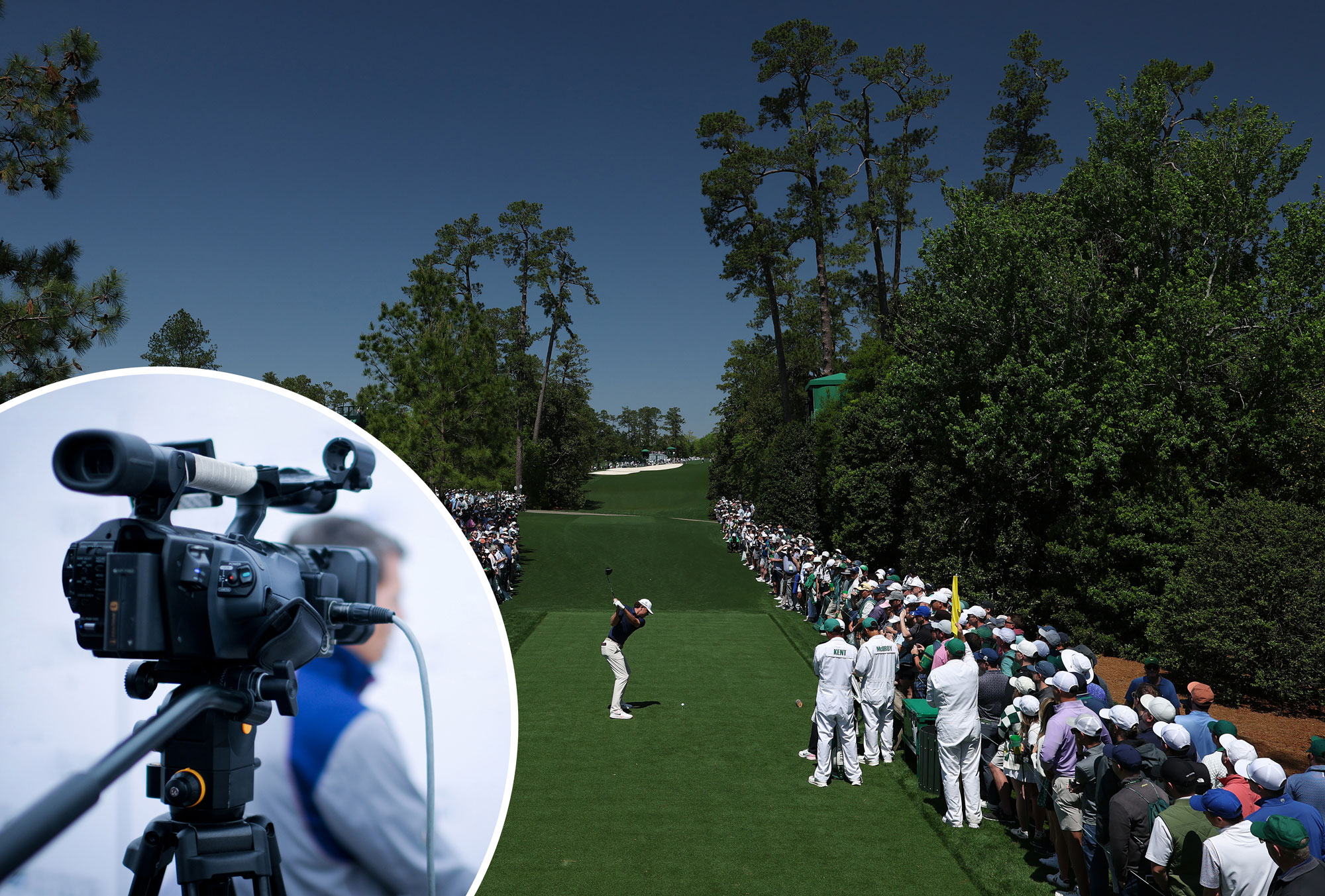World Handicap System: 6 Things You’ve Already Forgotten
A refresher on the key features of the World Handicap System


Golf’s return will be to a first full playing season under the World Handicap System – Here’s a refresher on some key features you may have forgotten.
World Handicap System: 6 Things You’ve Already Forgotten
With golf back up and running, we all have more to get to grips with than the challenge of remembering how to hit a ball. We’ll also have a completely new handicapping system to come to terms with.
Last November, the new World Handicap System (WHS) was implemented in the UK and Ireland but few of us had the chance to experience the changes it will make as winter and COVID regulations took us off course.
Now, as we've all returned to the game, we’re going to play a first full season under WHS, and it will be interesting to see the effects.
With the adoption of the WHS all golfers across the globe will be using the same handicapping system.
The principal aim is to make handicapping easier to understand and transferable to any course anywhere in the world.
Get the Golf Monthly Newsletter
Subscribe to the Golf Monthly newsletter to stay up to date with all the latest tour news, equipment news, reviews, head-to-heads and buyer’s guides from our team of experienced experts.
Another principal objective of the WHS is for golfers’ handicaps to be more representative of current playing ability, as the system allows handicaps to be more fluid with its calculation based on average scoring rather than aggregate scoring, as per the old system.
Here below is a recap on the fundamentals of the WHS, to give you the info you need at the start of the 2021 playing season.
World Handicap System: 6 things you’ve already forgotten.
1 – Handicap Index
This is, effectively, your new handicap that will be used as the basis for determining how many shots you receive on a given course, playing a given format.
It’s calculated from an average of the best eight of your last 20 returned scores.
When a new score is submitted, the Handicap Index is automatically recalculated and updated at the end of the day’s play, ready for use the following day.
Players new to golf or looking to obtain a first handicap will need to submit scorecards amounting to 54 holes.
From those, an initial Handicap Index will be provided.
This will be altered when 20 scores have been submitted to deliver a fully developed Handicap Index.
To prevent wild swings in handicap, the WHS provides caps – soft and hard – based on a player’s lowest Handicap Index in a one-year period.
If a player’s handicap goes three shots above the low index, further rises are reduced by 50%. (Soft cap.)
If a player’s handicap moves 5.0 strokes above the low index in a 12-month period, it cannot rise any further. (Hard cap.)
Max handicap is 54 but that's not quite the full story, you could play off a Course Handicap that is higher than that!
2 – Course Handicap
The Handicap Index, in conjunction with the difficulty of a course, gives a player their Course Handicap.
This is how many shots you will actually receive playing any given course. This may vary depending on the tees you choose to play from.
The difficulty of a course (off each teeing option) is calculated using Course Rating, Bogey Rating and Slope Rating – see below.
3 – Course Rating, Bogey Rating and Slope Rating
Course Rating is how many strokes a scratch golfer (someone with a Course Handicap of 0) should take on a course, off each sets of tees.
Bogey Rating measures playing difficulty for a bogey golfer (someone with a handicap of roughly 20 for a man and 24 for a women).
Knowing these two ratings allows WHS to determine the difficulty of the course and to produce a Slope Rating for each set of tees.
Slope Rating is calculated by subtracting Course Rating from Bogey Rating and multiplying by 5.381 for men and 4.240 for women.
Minimum Slope Rating is 55 for the easiest course up to 155 for the hardest courses.
At a course where all players compete from their Handicap Index, Slope Rating is 113.
The Course Handicap calculation is: Slope Rating divided by 113, multiplied by Handicap Index.
4 – General Play is important but optional
In order for the new system to be effective, it’s important that players record as many scores as possible for handicap calculations, General Play as well as competition. That way, Handicap Index is as representative as possible.
A General Play score is a pre-registered social score from a course and tee that has a Course and Slope Rating for your gender, played to singles medal, Stableford, Par or Bogey format.
But not every round needs to be counting. You have to select to pre-register before teeing off if you want it to count.
If you haven’t pre-registered, a score cannot be submitted.
5 – Conditions can still make a difference
The system includes a “Playing Conditions Calculation” that looks at how all players who have entered a score on a course have performed on that day, off all tees, compared to their expected performance.
At the end of each day’s play a Playing Conditions Calculation will be made by the system.
6 – You don’t need to carry a calculator with you
Although, on paper the system looks rather complicated with various calculations throughout; in reality, the golfer needn’t feel overwhelmed.
The system will carry out the calculations for you.
All you need to do is enter a competition or pre-register for General Play on a particular course, noting which tees you’re playing on, enter your scores, confirm and have them confirmed by a playing partner and submit – The system will update accordingly with any changes made ready for golf the following day.

Fergus is Golf Monthly's resident expert on the history of the game and has written extensively on that subject. He has also worked with Golf Monthly to produce a podcast series. Called 18 Majors: The Golf History Show it offers new and in-depth perspectives on some of the most important moments in golf's long history. You can find all the details about it here.
He is a golf obsessive and 1-handicapper. Growing up in the North East of Scotland, golf runs through his veins and his passion for the sport was bolstered during his time at St Andrews university studying history. He went on to earn a post graduate diploma from the London School of Journalism. Fergus has worked for Golf Monthly since 2004 and has written two books on the game; "Great Golf Debates" together with Jezz Ellwood of Golf Monthly and the history section of "The Ultimate Golf Book" together with Neil Tappin , also of Golf Monthly.
Fergus once shanked a ball from just over Granny Clark's Wynd on the 18th of the Old Course that struck the St Andrews Golf Club and rebounded into the Valley of Sin, from where he saved par. Who says there's no golfing god?
-
 Does Television Commentary Improve The Masters Viewing Experience? I Can Name 5 Different Ways I'd Rather Immerse Myself In The Action
Does Television Commentary Improve The Masters Viewing Experience? I Can Name 5 Different Ways I'd Rather Immerse Myself In The ActionWatching The Masters on TV is an annual tradition for many golfers, but does the commentary improve the experience? I can think of five better alternatives...
By Barry Plummer Published
-
 How Much The Winning Caddie Will Make At The 2025 Masters
How Much The Winning Caddie Will Make At The 2025 MastersThe Masters has seen a significant boost in prize money for 2025, with the Green Jacket winner, and his caddie, set to secure large paydays in Georgia
By Matt Cradock Published
-
 7 Most Annoying Golf Playing Partners
7 Most Annoying Golf Playing PartnersWe showcase the seven most annoying playing partners that golfers can have the misfortune of teeing it up with!
By Sam Tremlett Published
-
 How To Clean Golf Clubs And Grips
How To Clean Golf Clubs And GripsIf you want to know how to clean golf clubs and grips, check out this step-by-step guide
By Sam Tremlett Published
-
 In Praise Of Golfing In Winter
In Praise Of Golfing In WinterFergus Bisset on why he enjoys playing golf through the winter months
By Fergus Bisset Published
-
 'Why Do Golfers Only Wear One Glove?' You Asked Google And We've Got The Answer...
'Why Do Golfers Only Wear One Glove?' You Asked Google And We've Got The Answer...You asked Google and we've got the answer...
By Roderick Easdale Published
-
 How To Regrip Golf Clubs
How To Regrip Golf ClubsKnowing how to regrip golf clubs means you can afford to replace them as and when they need replacing
By Joe Ferguson Published
-
 The 7 Scariest Shots in Golf
The 7 Scariest Shots in GolfWith Halloween creeping up, we have selected the 7 scariest shots in golf
By Neil Tappin Published
-
 17 Ways To Tell You're Obsessed With Golf
17 Ways To Tell You're Obsessed With GolfThe tell-tale signs that you are a true golf fanatic
By Roderick Easdale Published
-
 10 Of The Best Arnold Palmer Quotes
10 Of The Best Arnold Palmer QuotesHere we take a look at 10 of our favourite Arnold Palmer quotes
By Roderick Easdale Published